Abstract
Exudates from Streptomyces griseoflavus Tü 2484 effectively mediated electron transfer between hydrogen sulfide and various nitrobenzenes. In general, pseudo-first-order kinetics were observed, except for the initial phase of the reaction at higher pH values. Under fixed pH and Dh conditions, linear free energy relationships were found between the logarithms of the reaction rate constants and the one-electron reduction potentials of the nitroaromatic compounds. No competition was observed between various compounds. Comparison of the results of this study with the results of experiments conducted with model quinones and an iron porphyrin suggest that the secondary metabolites cinnaquinone and dicinnaquinone, excreted by strain Tü 2484 on the order of 100 mg/liter, are responsible for the catalytic activity of the exudate. Further support for this hypothesis comes from the facts that the catalytic activity of the exudate became prominent only after the growth phase of the microorganisms and that the mediating substances have a molecular weight of less than 3,000.
Full text
PDF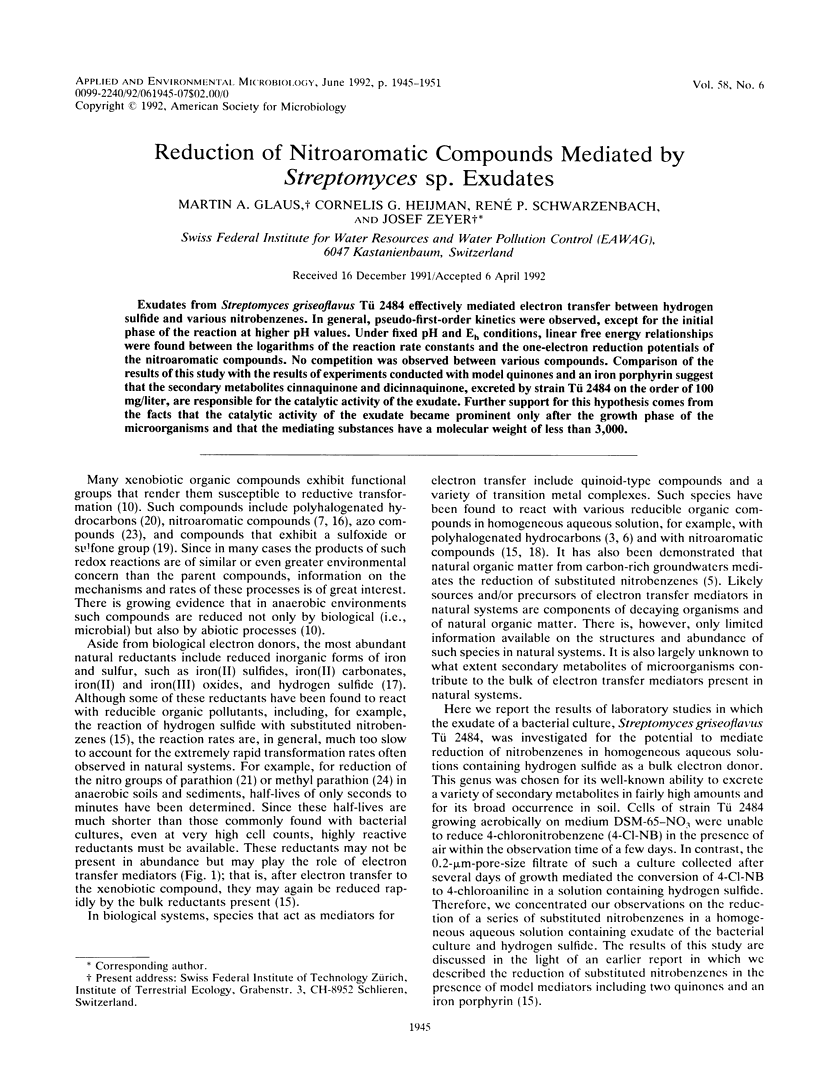
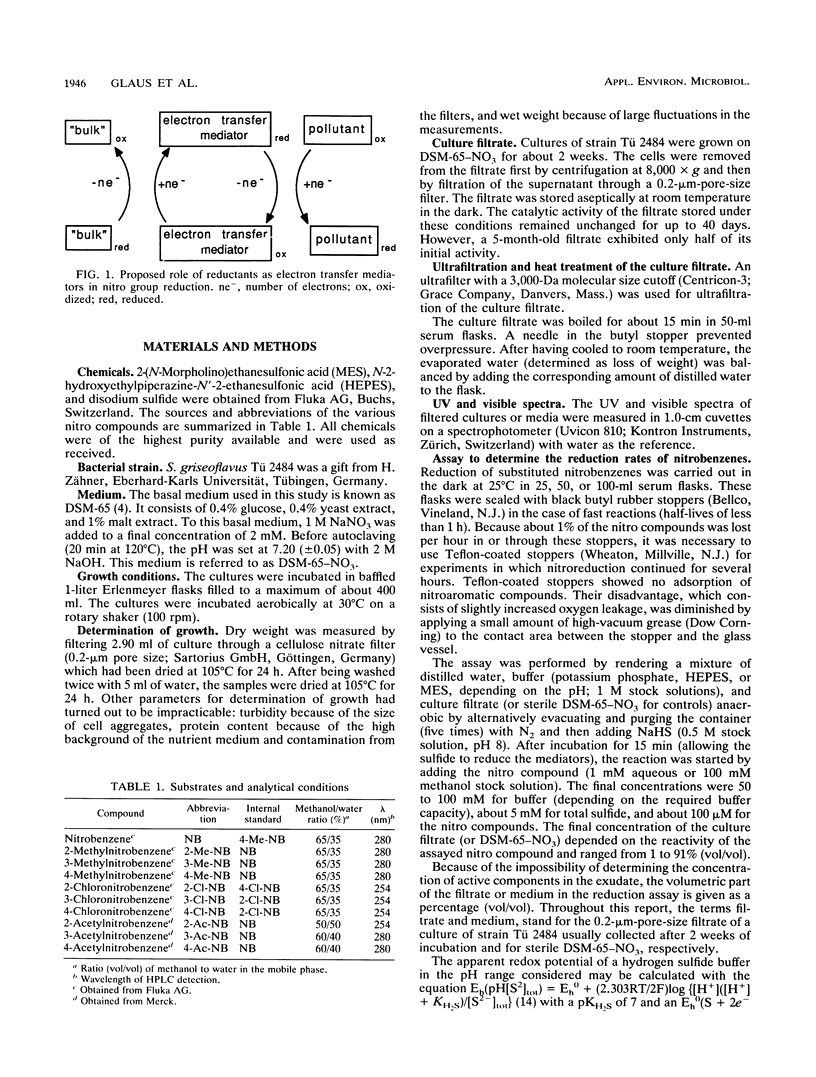
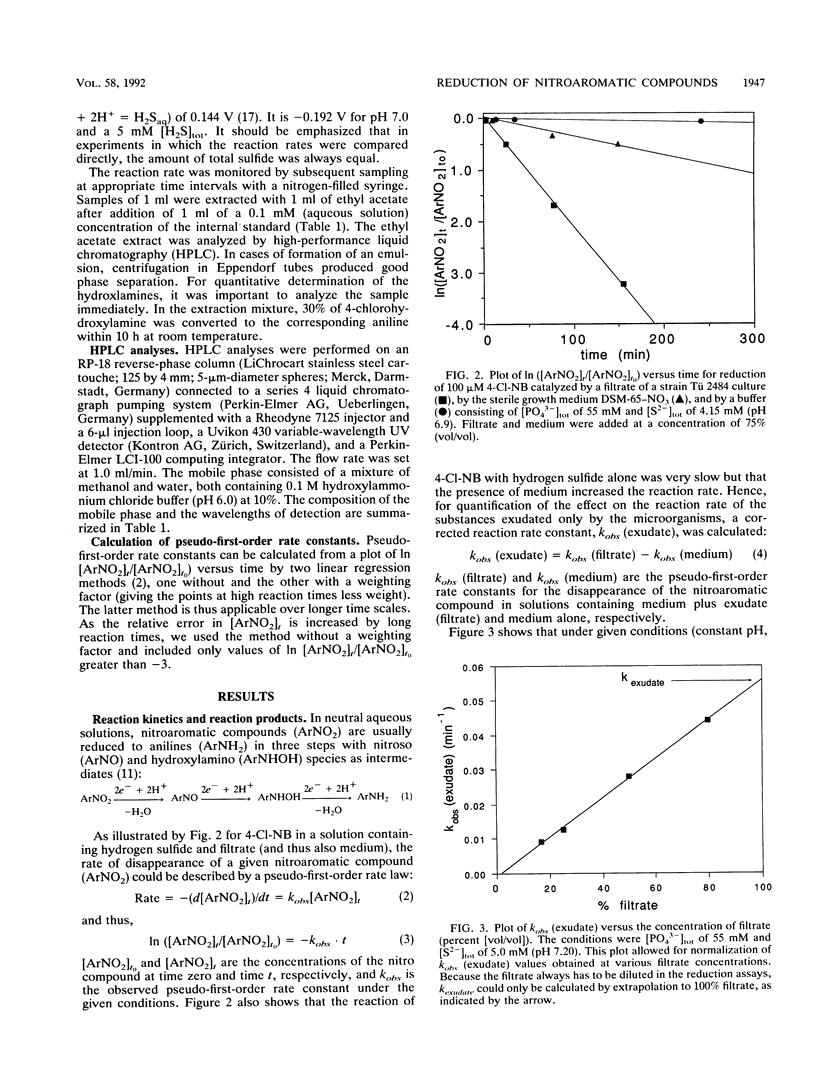
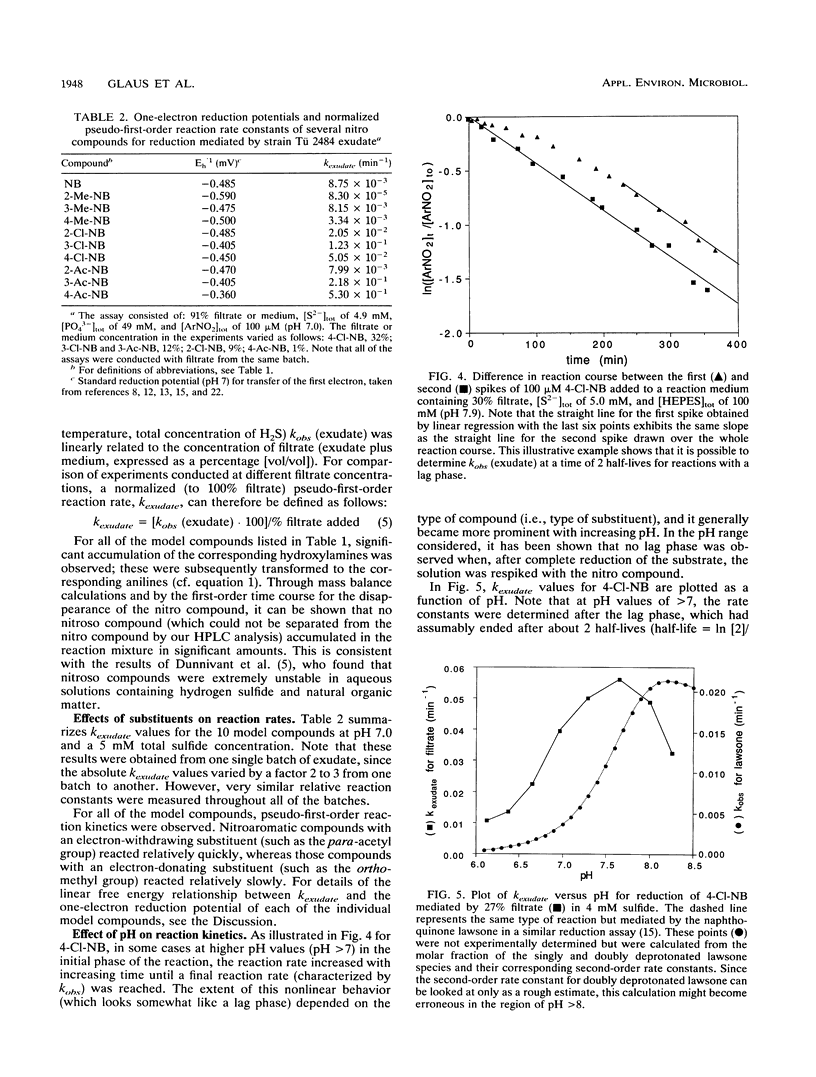

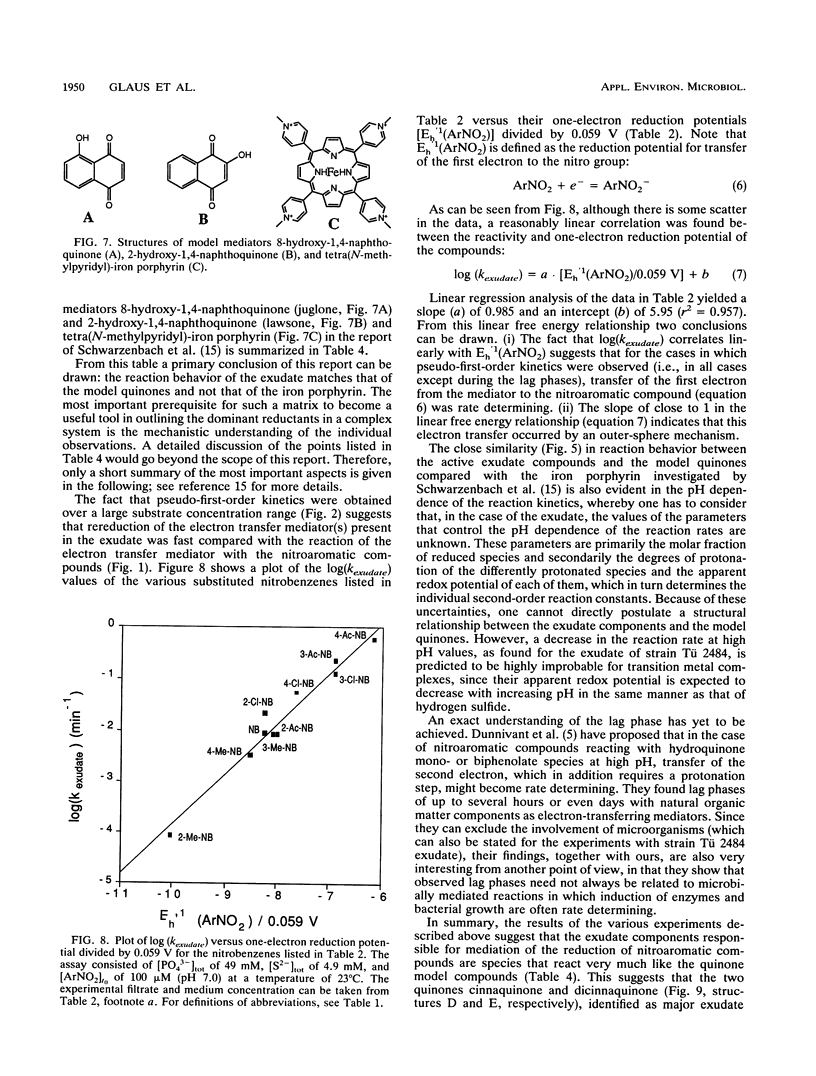
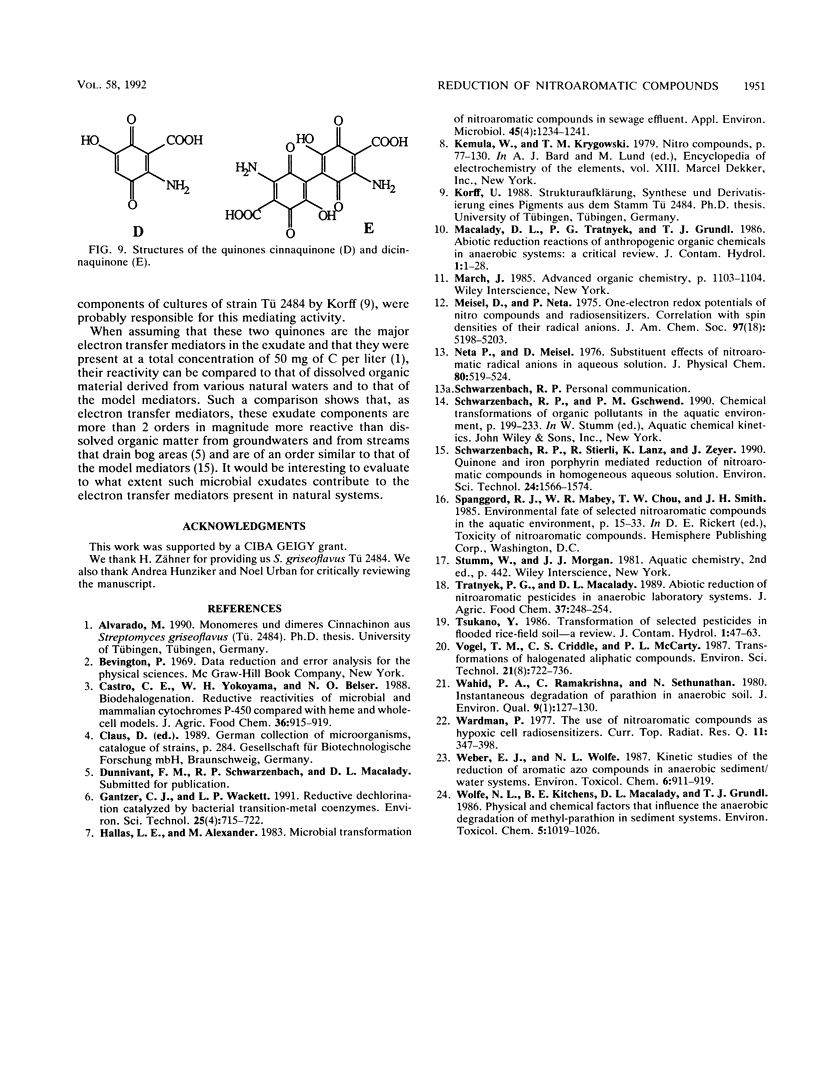
Selected References
These references are in PubMed. This may not be the complete list of references from this article.
- Hallas L. E., Alexander M. Microbial transformation of nitroaromatic compounds in sewage effluent. Appl Environ Microbiol. 1983 Apr;45(4):1234–1241. doi: 10.1128/aem.45.4.1234-1241.1983. [DOI] [PMC free article] [PubMed] [Google Scholar]
- Wardman P. The use of nitroaromatic compounds as hypoxic cell radiosensitizers. Curr Top Radiat Res Q. 1977 Aug;11(4):347–398. [PubMed] [Google Scholar]


